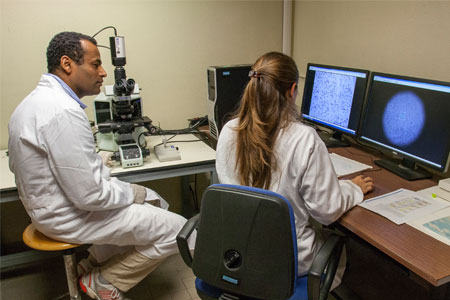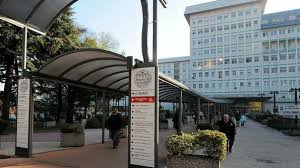The project focuses on two models of chronic lymphoproliferative disease (CLD), selected on
the basis of both the specific background and the well established research interactions of the
Units involved in the project: B-cell chronic lymphocytic leukemia (B-CLL) and viral-induced
T- and B-derived lymphoid malignancies [T-cell leukemia/lymphoma (ATLL) and primary
effusion lymphoma (PEL), respectively].
The whole program moves across a translational perspective and includes studies of cell and
molecular biology, with particular emphasis on the influence of microenvironment on tumor
growth, as well as on pre-clinical applications in animal models. In particular, the project is
designed to address the following main issues:
1. Impact of cell signaling network on tumor growth and prognostic classification of
disease;
2. Role of bystander cells, i.e. cells of myeloid and mesenchymal origin, on tumor onset,
progression and host immune response;
3. Role of viral gene products on cell transformation and their interaction with
microenvironment;
4. Setting up and preclinic validation of innovative immunotherapy approaches.
In B-CLL, recent findings point to the pathogenetic and clinical relevance of several molecular
mechanisms, such as those related to mutational status of the IGHV genes, BCR antigenic
stimulation, interactions between non-neoplastic stromal/immune cells and neoplastic
component. This renewed interest on the topic prompts us to investigate some biological
features at the interface between neoplasia and immunity, including i) the ability of leukemic
cells to interpret and integrate external clues derived from the BCR engagement or delivered
by bystander cells, such as neutrophils and mesenchymal stem cells, whose role is still
unknown in CLL; ii) the impact on the leukemia process of the fine tuning of immune
response by cells of myeloid and mesenchymal origin; iii) the potential of so far unexplored
immunotherapic approaches in in vivo pre-clinical models.
ATLL is a valuable model to gain insights into the interplay between host and viral factors in
determining T-cell transformation. HTLV-1-driven transformation is mediated by the viral
protein Tax, a powerful transcriptional activator of viral and cellular genes that controls cell
turnover and increases genetic instability. It is also likely that additional viral and/or cellular
genes contribute to tip the balance between clinically silent infection and progression to
ATLL. Our studies are focused on the understanding the effects of individual gene products
on T-cell turnover and interaction with the microenvironment. Major objectives of our studies
include: i) signal transduction pathways engaged by the Tax oncoprotein; ii) functional
interactions between Tax and p13, a viral protein with tumor suppressor properties; iii) the
role of the adaptive immune response to Tax in the persistence of HTLV-1 infection and
disease progression.
PEL is an aggressive B-cell lymphoma growing within serous body cavities, which are lined
by mesothelia. To study the cross-talk between tumor cells and the host microenvironment,
we will co-culture PEL cells with mesothelial cells, to analyze i) the contribution of
mesothelial cells to PEL cell proliferation and survival; ii) the role of IFN-induced genes
involved in the in vivo anti-neoplastic activity of this cytokine. In-depth understanding of
interactions between PEL cells and mesothelia may provide new approaches to improve PEL
therapy.
This research program will rely on the consolidate experience of the involved Research
Units in the fields of molecular biology, hematology, immunology as well as on their proven
clinical experience in CLD management. Furthermore, an already existing network among
the participant groups, documented by several papers published together as a by-product of
previous collaborative projects, will improve the sharing and fruitful exchange of scientific
contents and technological platforms.







